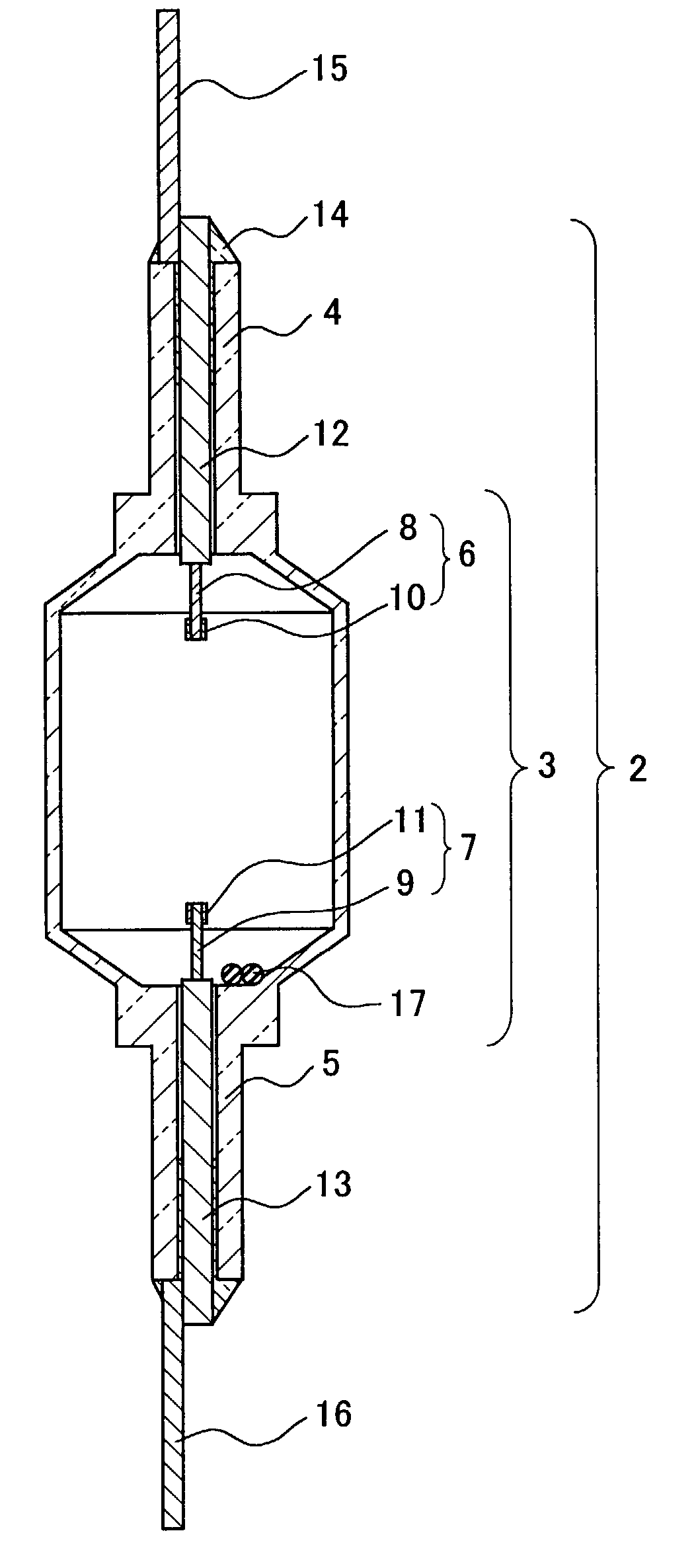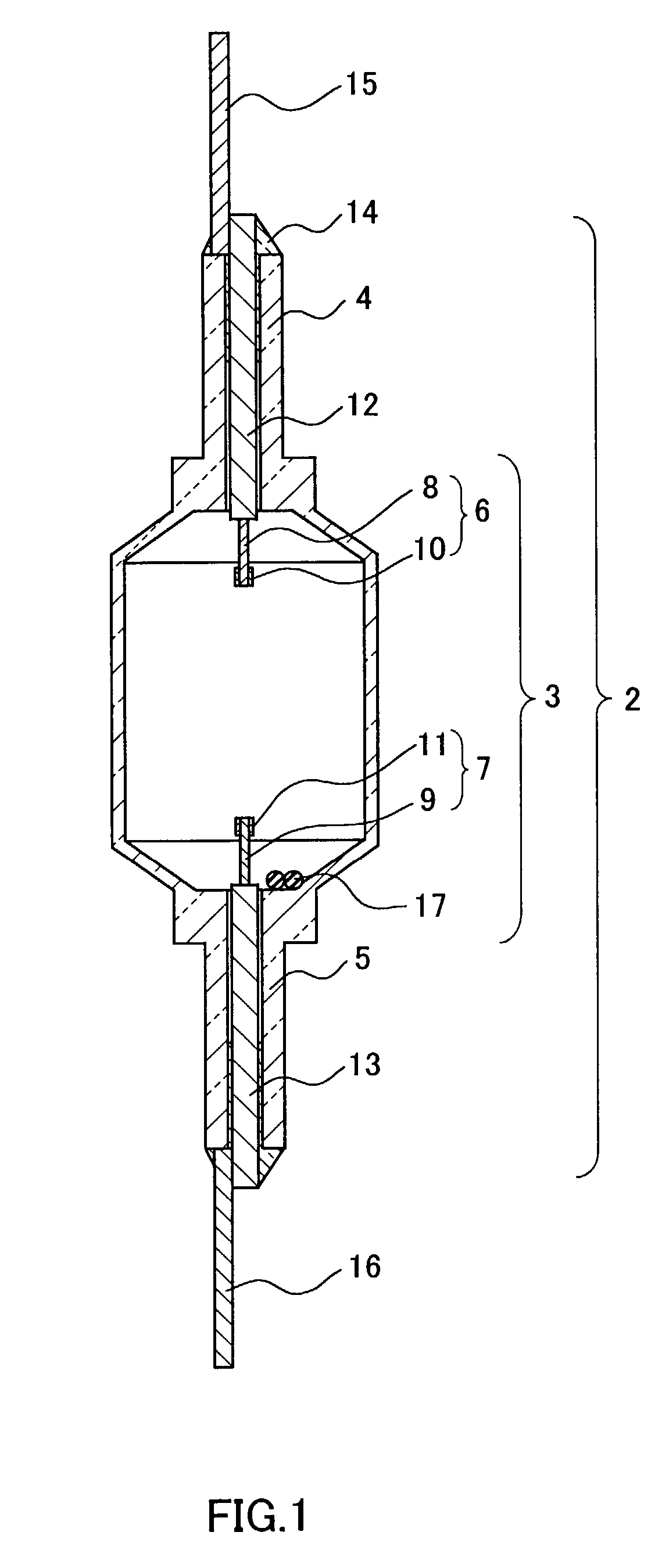Metal halide lamp
- Summary
- Abstract
- Description
- Claims
- Application Information
AI Technical Summary
Benefits of technology
Problems solved by technology
Method used
Image
Examples
example 1
[0025]For examining the service life in aging, a lamp 18 comprising an arc tube 1 was prepared. The arc tube 1 was previously filled with 6 mg of a luminescent material 17 composed of 35 wt % (14 mol %) of CeI3, 60 wt % (83.5 mol %) of NaI, and 5 wt % (2.5 mol %) of ScI3. As shown in FIG. 3 as a line of Ce / Sc / Na, the flux maintenance factor of the lamp was improved drastically to 65% when the aging time was about 12000 hrs. The color temperature change during the aging was not more than −150 K, and this was better in comparison with a lamp that was not filled with ScI3.
[0026]In an analysis of the lamp after an aging of 5000 hrs, a sufficient amount of CeI3 remained (80–90% of the initial filling amount). To the contrary, only 20–30% of ScI3 remained since relatively a large amount of ScI3 reacted with the alumina ceramic.
[0027]Among the initial properties of the lamp 18, the flux and the luminous efficiency were 22800 lm and 117 lm / W respectively i.e., initial values thereof were ke...
example 2
[0034]A lamp was prepared under the same condition of Example 1 except that the filling amount of scandium iodide was varied in a range from 0 to 200 molar parts with respect to 100 molar parts of CeI3, and the lamp was subjected to an aging test. When the amount of the scandium iodide exceeded 100 molar parts, the tungsten electrodes (6,7) were deformed and worn and also the arc tube was blackened, and this caused lowering of the flux maintenance factor. When the amount of the scandium iodide was less than 1.5 molar parts, no specific effects were expressed in suppressing a reaction between alumina and cerium halide.
[0035]The test results show that a preferred range of the amount of scandium iodide is from 1.5 molar parts to 100 molar parts when CeI3 is 100 molar parts. In an analysis after the aging, a small amount of aluminum was detected in the tube of a lamp in which at least 150 molar parts of ScI3 had been filled. The aluminum is derived from aluminum iodide (AlI3), which was...
example 3
[0040]Example 3 addresses a method for improving a flux maintenance index by suppressing the focusing or bending of an arc discharge caused especially by the above-mentioned cerium halide luminescent material, and also for obtaining another essential object of improving the luminous efficiency. It was most effective when a combination of thallium halide (TlX) and indium halide InX was filled to serve as an additional luminescent material.
[0041]Specifically, a lamp 18 used for measurement of the initial properties and the change in the flux maintenance index in aging was prepared by adding TlI and InI in a composition range from 0 to 10 wt % to the above-described luminescent material (CeI3+NaI+ScI3).
[0042]It was observed that the arc discharge was spread and its bending towards the arc tube wall was suppressed when more TlI and InI were filled. The flux maintenance factor of the lamp 18 in aging was further improved, and a rated service life was improved, i.e., the flux maintenance ...
PUM
 Login to View More
Login to View More Abstract
Description
Claims
Application Information
 Login to View More
Login to View More - R&D
- Intellectual Property
- Life Sciences
- Materials
- Tech Scout
- Unparalleled Data Quality
- Higher Quality Content
- 60% Fewer Hallucinations
Browse by: Latest US Patents, China's latest patents, Technical Efficacy Thesaurus, Application Domain, Technology Topic, Popular Technical Reports.
© 2025 PatSnap. All rights reserved.Legal|Privacy policy|Modern Slavery Act Transparency Statement|Sitemap|About US| Contact US: help@patsnap.com



